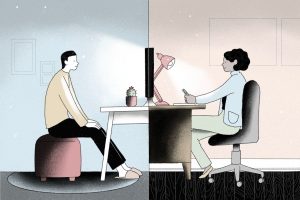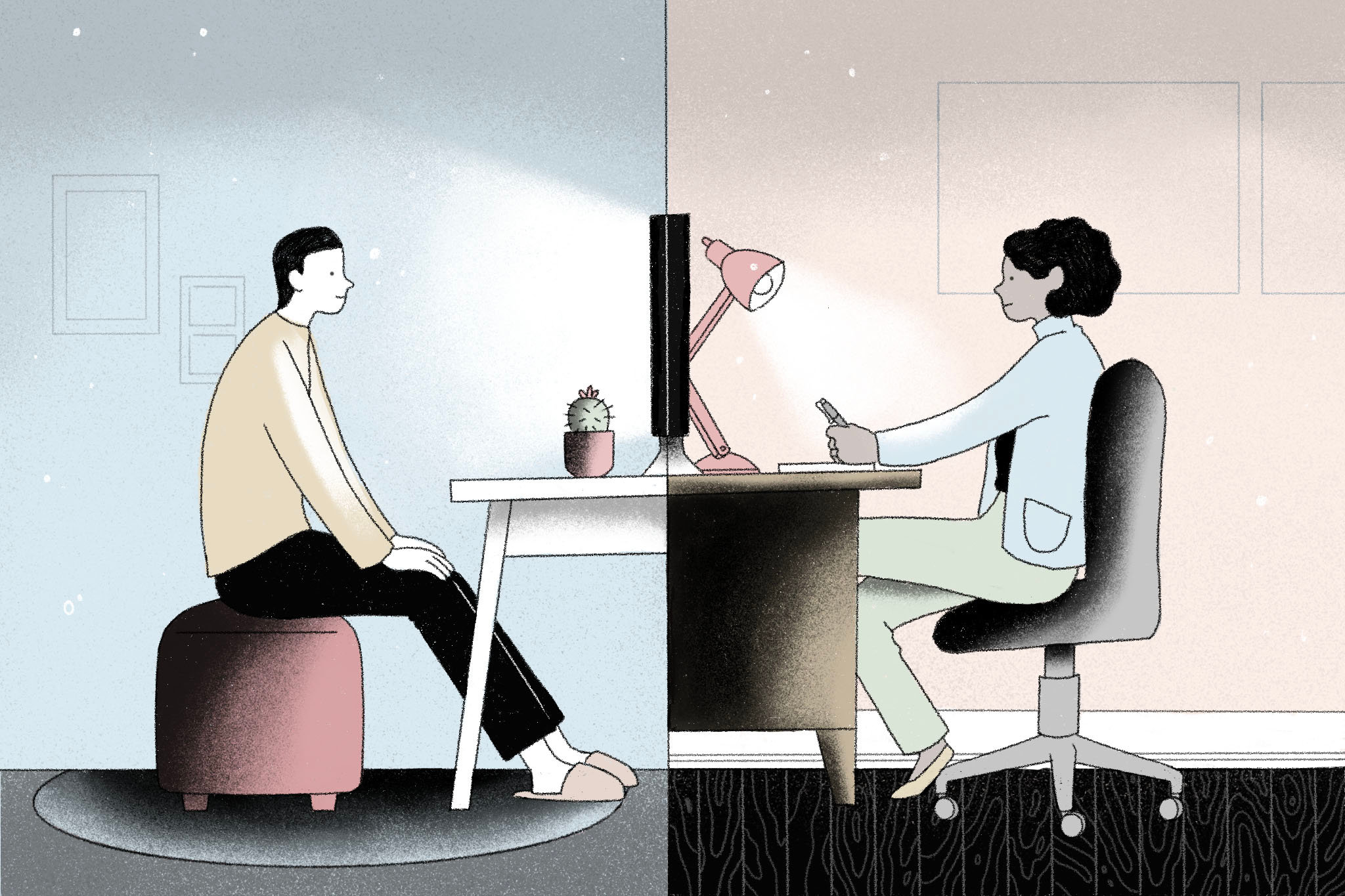By Christopher Vinson
2020 has been challenging for everyone. Social distancing, and the accompanying social isolation, exacerbate challenges for patients suffering through mental health illnesses. To combat increased feelings of isolation therapists began utilizing teletherapy.[1] Teletherapy has emerged as an online mental health resource to connect patients to therapists in a quicker, safer, and more convenient manner. A recent survey by the American Psychological Association reveals that nearly 75% of therapists around the country are providing remote services exclusively.[2] However helpful, the increased use of teletherapy also raised new concerns regarding privacy, insurance policies, and state-to-state licensing requirements.[3]
The privacy of patients is mostly governed through the Health Insurance Portability and Accountability Act (HIPAA). Any platform used to communicate between health provider and client must be HIPAA compliant.[4]Such a platform must enable the health professional to secure the client’s data and privacy.[5] Ensuring that the platform chosen has signed a HIPAA-compliant business associate agreement can alleviate these concerns.[6] Taking this step will fulfill the goal of patient privacy and prevent future legality issues concerning HIPAA compliance.[7]
Mental health professionals and clients have also experienced issues regarding individual insurance policies. The pandemic only heightened concerns over health insurance coverage for telemedicine and teletherapy.[8]Prior to the pandemic, the market had been slow to embrace this new form of medicine. The increased adoption of teletherapy during social isolation has led to rushed policy changes regarding this issue.[9]Patients are now unsure whether or not their current health insurance plan will actually cover this new method of treatment.[10]
The pandemic has renewed the focus on telehealth parity laws around the country. Mental health parity is the equal treatment of mental health conditions in insurance plans.[11] Parity was first passed in Congress in 2008 with the Paul Wellstone and Pete Domenici Mental Health Parity and Addiction Equity Act (MHPAEA).[12]However, this law only mandated certain health plans to follow parity laws which has left in a gap in coverage.[13]
Parity ensures that health providers are compensated equally for in-person and virtual visits.[14] The gap in coverage created by the MHPAEA has yet to be adequately filled through state telemedicine parity laws.[15] A state has the ability to adopt a stronger parity law that could ensure coverage for mental health conditions through telemedicine.[16] Passing additional telemedicine parity laws would reduce any stress associated with teletherapy by ensuring that those visits will be covered equally under individual’s insurance.[17]
Finally, state licensing regulations has threatened to derail the rise in teletherapy. These regulations typically prevent therapists from practicing in different jurisdictions from the one they are licensed in.[18] This obstacle was briefly avoided during the pandemic as many states exempted teletherapy providers from this requirement.[19] However, this was short-lived as many of these exemptions have been lifted with the expiration of public health orders around the country.[20]
This challenge has particularly affected universities and colleges who wish to provide care for their out-of-state students.[21] Some institutions, such as Johns Hopkins University, partnered with telehealth companies to increase access for treatment of its students.[22] This allows for students to maintain continuity of care without worrying about the limitations set by state licensing requirements.[23] Johns Hopkins saw substantial usage of this service and were satisfied that it was allowing them to provide care to more students.[24]
There are also efforts to pass a federal law that will allow telehealth visits from any state during the pandemic.[25] The TREAT Act was introduced to the Senate on August 4, but has seen little traction.[26] Passing this law would remove the volatility of state to state regulations and public health orders.[27] State laws are subject to change at any moment so passing a federal law would make providing care to out-of-state patients more reliable.[28]
Social distancing has impacted many who miss the daily interactions of pre-pandemic life. Providing care for those who are struggling during this time is of the utmost importance. These are the times where innovation is key. It is encouraging that most therapists have adopted the teletherapy methodology. Expansion of the teletherapy market can provide a great service to many, further enhancing and saving lives.
[1] Jeff Wisler, Teletherapy, Popular in the Pandemic, May Outlast It, N.Y. Times (July 9, 2020), https://www.nytimes.com/2020/07/09/well/mind/teletherapy-mental-health-coronavirus.html.
[2] Psychologists Embrace Telehealth to Prevent the Spread of COVID-19, Am. Psychol. Ass’n (Jun. 5, 2020),https://www.apaservices.org/practice/legal/technology/psychologists-embrace-telehealth.
[3] Wisler, supra note 1.
[4] Platforms that are HIPAA Compliant, CPH & Associates, https://www.cphins.com/platforms-that-are-hipaa-compliant/ (last visited Nov. 12, 2020).
[5] Id.
[6] Id.
[7] Id.
[8] Sara Lindberg, Does Health Insurance Cover Online Therapy, Verywell Mind (May 8, 2020), https://www.verywellmind.com/does-my-health-insurance-cover-online-therapy-4842511.
[9] See id.
[10] Id.
[11] What is Mental Health Parity?, National Alliance of Mental Illness, https://www.nami.org/Your-Journey/Individuals-with-Mental-Illness/Understanding-Health-Insurance/What-is-Mental-Health-Parity (last visited Nov. 12, 2020).
[12] Id.
[13] See id.
[14] Kristen Fisher, New Survey Highlights Pros and Cons of Teletherapy for Mental Health, Verywell Health (Oct. 14, 2020). https://www.verywellhealth.com/telehealth-mental-health-5081863.
[15] Id.
[16] National Alliance of Mental Illness, supra note 11.
[17] Fisher, supra note 14.
[18] Greta Anderson, Extending the Reach of Mental Health Therapy, Inside Higher Ed (Oct. 1, 2020),https://www.insidehighered.com/news/2020/10/01/teletherapy-platforms-extend-reach-college-counseling-centers.
[19] Id.
[20] Id.
[21] Id.
[22] Id.
[23] Id.
[24] Id.
[25] Livia Gimenes & Julia Grossman, Students Struggle with Navigating CAPS’ Resources Remotely, The Brown Daily Herald (Oct. 20, 2020), https://www.browndailyherald.com/2020/10/20/students-struggle-navigating-caps-resources-remotely/.
[26] See id.
[27] Id.
[28] Id.

Image Source: https://www.nytimes.com/2020/07/09/well/mind/teletherapy-mental-health-coronavirus.html
